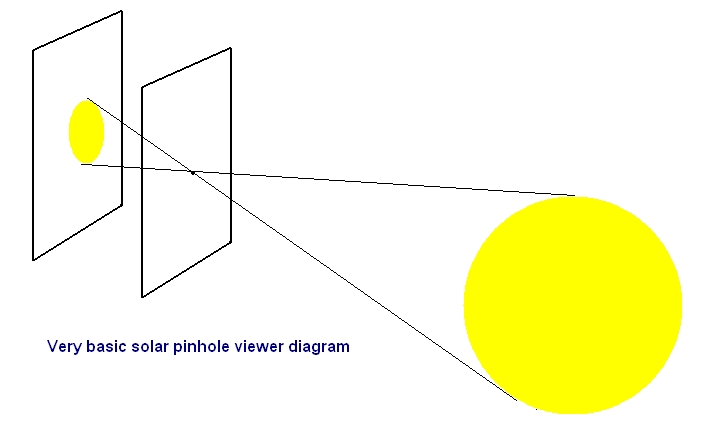SkyCaramba weekly astronomy blog for the week ending May 19, 2012
Want to take a good safe look at the sun and count sunspots or try to see a solar flare? You have to filter out most of the bright light and some of the invisible light too. You can do it by building, buying, or browsing. Don’t be careless and don’t be tempted to squint real hard or look at the sun through dark glasses not made for that purpose. That’s dangerous.
The simplest way to safely see the sun is on the internet. You don’t always get live views. But you get access to more views than you know what to do with if you’re not a scientist. It doesn’t have to be sunny where you are to see what an observatory took a picture of earlier today on another continent. You can see the sun from places off the earth thanks to spacecraft that observe it to help us track solar storms that could cause trouble for us. And during special events such as this month’s solar eclipse or next month’s transit of Venus, there are live feeds. If you don’t happen to live in one of the places where the event is visible, you can watch it online.
You can make your own pinhole viewer. The easiest pinhole viewer to make has a pinhole in one piece of paper held up with one side toward the sun. Another piece of paper is placed below it so the sunlight coming through the pinhole focuses on it. For almost as much simplicity, make a box viewer. Cut two holes in opposite corners on the same side of the box and cover one hole with aluminum foil or paper. Poke a pinhole in the paper. Stand with your back to the sun and orient the box until you see the image of the sun projected inside it. The bigger the box, the bigger the image. If the image is too dim, try again with a smaller box.
Binoculars and telescopes are shipped with warnings that you should never use them to look at the sun. There are safe ways to use them for solar viewing. But the manufacturers would rather not give you those instructions and risk you misunderstanding them. The easiest way is to point a scope at the sun and project the image coming out of the eyepiece onto a wall or piece of paper. You CANNOT look into the eyepiece safely this way. You have to figure out which way to move the scope without that guide. This can be very bad for the equipment. The focused light can melt plastic.
 A better way is to get a solar viewing filter. It goes on the end of the scope and keeps almost 100% of the light from entering. The telescope’s innards don’t get overheated and you can actually look at the sun’s image in the eyepiece. Always check the solar filter for any problems before you use it. If it’s cracked, coming apart, or doesn’t fit properly, get a new one. I know, at $50 apiece, you don’t want to. But you won’t be celebrating the money you saved if it suddenly lets unfiltered sunlight into your telescope and you’re blind in that eye for the rest of your life.
A better way is to get a solar viewing filter. It goes on the end of the scope and keeps almost 100% of the light from entering. The telescope’s innards don’t get overheated and you can actually look at the sun’s image in the eyepiece. Always check the solar filter for any problems before you use it. If it’s cracked, coming apart, or doesn’t fit properly, get a new one. I know, at $50 apiece, you don’t want to. But you won’t be celebrating the money you saved if it suddenly lets unfiltered sunlight into your telescope and you’re blind in that eye for the rest of your life.
Decide which method is appropriate for you. Don’t overspend and don’t take on more risk than you can manage. You can safely view the sun in your own yard, but you could also do it dangerously. ¡SkyCaramba!
A few links to other sites with more information:
http://www.hilaroad.com/camp/projects/eclipse_viewer/eclipse_viewer.html
http://cse.ssl.berkeley.edu/AtHomeAstronomy/activity_03.html
http://www.astronomylive.com/event/annular-solar-eclipse-20-may-2012 will show the solar eclipse of May 20, 2012
http://www.astronomylive.com/event/venus-transit-05-june-2012 will show the transit of Venus on June 5, 2012
